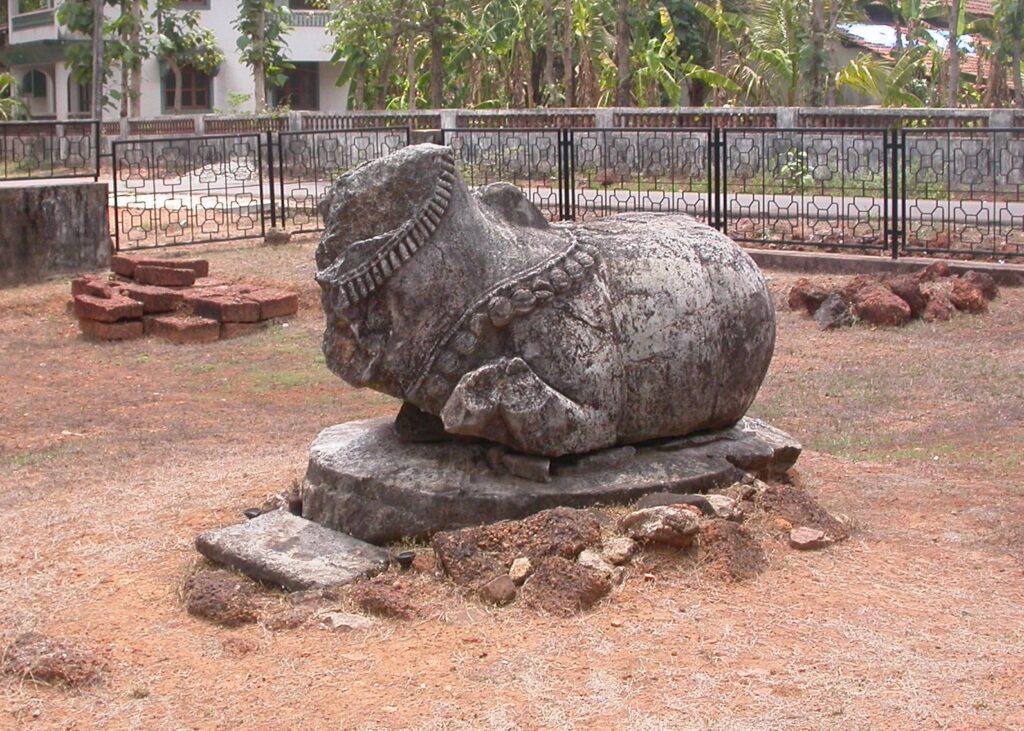Chandor - The ancient city of Chandrapura

Chandor, the ancient city of the Chandrapura, served as a capital for the Bhojas and Kadambas (3-4th to 11th Century A.D.) as well as a port town. The copper plates from Shiroda and Sivapura reveal the rule of Bhoja King Devarajah and Konkan Maurya King Chandravarman, respectively, in Chandrapura.
The temple site is in the middle of Chandor Cotta and houses the remains of an 11th-century Shiva Temple which is also known as Isvorachem. It was previously excavated in 1930 by Rev. Fr. Heras and in 1974 by the ASI. The latter excavation brought to light a brick temple consisting of Garbhagriha surrounded by Pradakshinapatha, a large Sabhamandapa and a medium sized Makhamanpada or Porch. Excavation during 1999-2000 unearthed two major phases of construction plus a number of outer alterations to the second phase, which are grouped together as Phase III.
Phase I reveals a roughly cruciform building remains with the 14 pillar bases arranged into two rows of six, with a further two located within the western transept. Phase IIA consists of a temple overlying the phase I building with a large squarish mandapa and a small Garbhagriha, fanning west phase IIB. A rectangular structure was added to the east of the temple surrounding garbhagriha in Phase IIA. In Phase III the basic Phase IIB building remains in use as long as the site was the temple except for a crudely constructed square brick structure added in the centre of Mandapa of Phase III. This was ascribed as Garbhagriha by the 1974 excavators. This structure considerably belongs to later than the phase II walls, hereby called as the western shrine.
To the east of the temple, where the stone Nandi stands, now surrounded by a modern stone wall, This is said to have been removed from the ditch of the western shrine of Phase III. The sculpture can be stylistically dated to the 11th Century AD, towards the east of Nandi sculptures, Excavations revealed a broad brick wall running in a north-south direction. This wall appears to be a city wall.
The suggested date of the Phase I structure is between the 3rd-7th century A.D. and the adhistana mouldings of the Phase II structure, which overlies it, can be approximately dated to the 7th century A.D. The phase III structures present the later medieval changes made to the buildings, probably in the period between the 8th and 13th Century A.D.
Related Posts
Share via:



